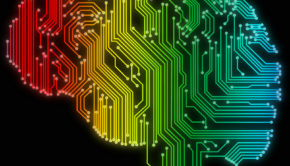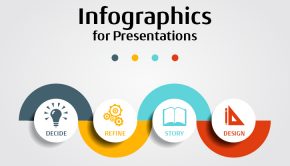Why Your Brain Craves Infographics?
Have you ever though why are visual communications and messages much more effective than written down words? What gives the images and graphical representation so much power? Does the brain like the pictures it sees through the eyes? Or is there any other reason for the dire need for visuals and graphics for the brain to interpret?
It has been proven through scientific research and studies that human brain has a higher absorption and synthesizing capability when it comes to interpretation of visual information. The process is much faster than any other form of stimulus. It is, therefore, the most effective medium to stimulate the human brain and get the required attention from the viewer.
What are infographics? In the world of science and technology, this visual messaging and communication is known as the infographics. As the name suggests, it is a combination of two words, information, and graphic. It means representing any information and data through graphical images and pictures. Infographics help understand the information in a much faster and easier way.
Infographics help consolidate large amounts of data, information, and messages through simple images, graphs, charts and pictures. They are widely used in our surroundings. Their common examples include road signs, marketing ads, pie charts, histograms and much more.
With so much information and data thrown towards us every day, it is very difficult to comprehend, understand and retain all of it. It has been highlighted through studies and researches, that infographics are much more liked by human brain than regular verbal and written messages.
Let us look are some of the reasons why the brain craves for infographics more.
- Brain’s activity for visuals:
According to scientific evidence, the human brain’s 50% components are involved in the processing of visual information alone. This means that it has a larger capability to interpret and retain infographics.
- Visually more attractive:
Many experiments and studies have proven that human eyes and brains find colorful images more attractive and appealing. This enhances their willingness to remain attentive towards those messages that are info-graphically designed. People want to read books and text that are overloaded with colorful and appealing pictures as they attract the eyes more.
- More comprehendible:
When people are shown pictures along with the message that is being communicated, they tend to get a better understanding of the message than just the verbal thing. Looking at a graphical representation of an instruction makes things much clearer for the audience to understand and retain it for a longer period of time. Hence infographics are more effective and are often used for essential precautions and instructions like that on medicines.
- High reception power of eyes:
The human eyes are the most efficient receptors for the brain. According to scientists, more than 70% of all the human receptors of the brain are located in the eyes. Hence whatever the eyes see and like is more liked by the brain as well.
- High-speed processing:
It takes only one-tenth of a second for the brain to interpret and understand the visuals and imagery messages.
Author Bio:
This article was written by Jacob Arch, who is a business graduate from a reputable institute, who enjoys writing for blogs in his free time and he also likes to serve students who can pay someone to do your assignment.















